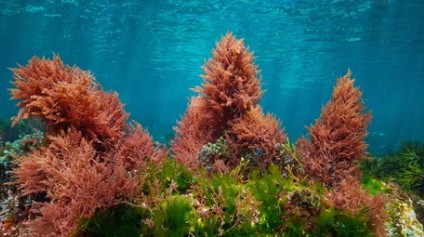Seaweeds are primary producers in the aquatic food chain and a major component of the ecosystem, as they are considered a natural dietary biological resource for various organisms. Seaweeds are multicellular algae with a wide geographic distribution. They are classified as red (Rhodophyta), brown (Phaeophyta), and green seaweeds (Chlorophyta) based on the type of pigmentation and morphological characteristics. Identification of seaweeds based on morphological characters is difficult because most genera are known for their different morphological types. Also, convergent evolution has occurred in many distantly related macroalgae, resulting in similar morphology, complicating morphology-based identification. In addition, there are potential differences in the types and functions of bioactive compounds among different genera and species of seaweed. Therefore, species-specific identification is essential before studying the activity of bioactive compounds in seaweeds.
Seaweeds can be classified according to their pigmentation as brown (yellow algae phylum), red (red algae phylum), and green (green algae phylum). Seaweeds all play an integral role in the marine ecosystem. Species such as kelp can form extensive forests, provide shelter for the spawning of many species, and provide nursery grounds for larvae. Seaweeds help provide oxygen to the ocean and are one of the main producers in the marine food chain. In addition, some seaweeds have the ability to remove heavy metals from the water, potentially for biomonitoring and bioremediation of such pollutants. Seaweeds also have excellent survival strategies to withstand the many environmental stresses they are exposed to. For all these reasons, coupled with their unique life cycle and physiology, seaweeds are interesting subjects for research.

Molecular biology methods are essential to reveal potential species, with DNA barcodes proving an effective technique for monitoring marine flora-associated fauna and macroalgae. Our scientists have worked to build a comprehensive reference genetic library of seaweed DNA barcodes combined with taxonomic and georeferenced data. The strengths of our library are:
Lifeasible has extensive experience in all aspects of seaweed research. We are proud to offer customized services for the morphological identification of seaweed using DNA barcoding to our clients. We have also established invaluable international partnerships with renowned companies to provide you with customized morphological identification processes for seaweed.
Your collected samples are washed and transported to the lab in sterile zipper-lock bags under cold conditions. The samples are stored at -20 ˚C for further use. The seaweeds are first identified by studying their morphological characteristics using botanical methods.
The sequences of the gene fragments were analyzed and corrected using Genedoc.
Our morphological identification solutions for seaweeds are critical for species-level identification of seagrasses, helping industry experts working on the development of seaweed biological resources and taxonomic/non-taxonomic researchers working on climate, agriculture, and epigenetics for accurate seaweed identification. Our customer service representatives are enthusiastic and trustworthy 24 hours a day, 7 days a week. If you are interested in our services, please feel free to contact us for more information or to discuss in detail.